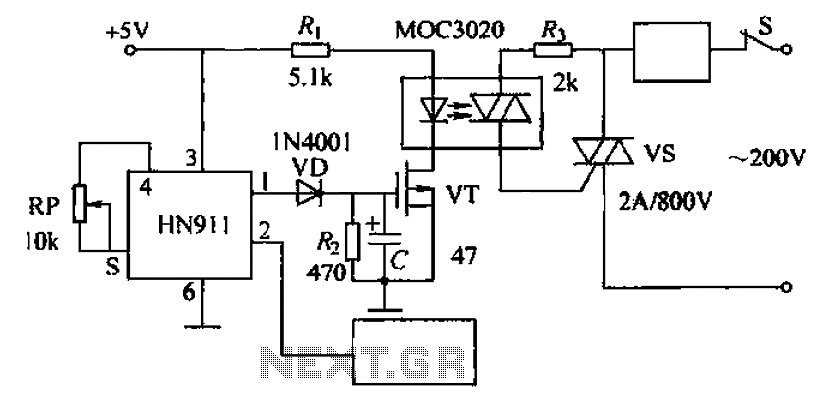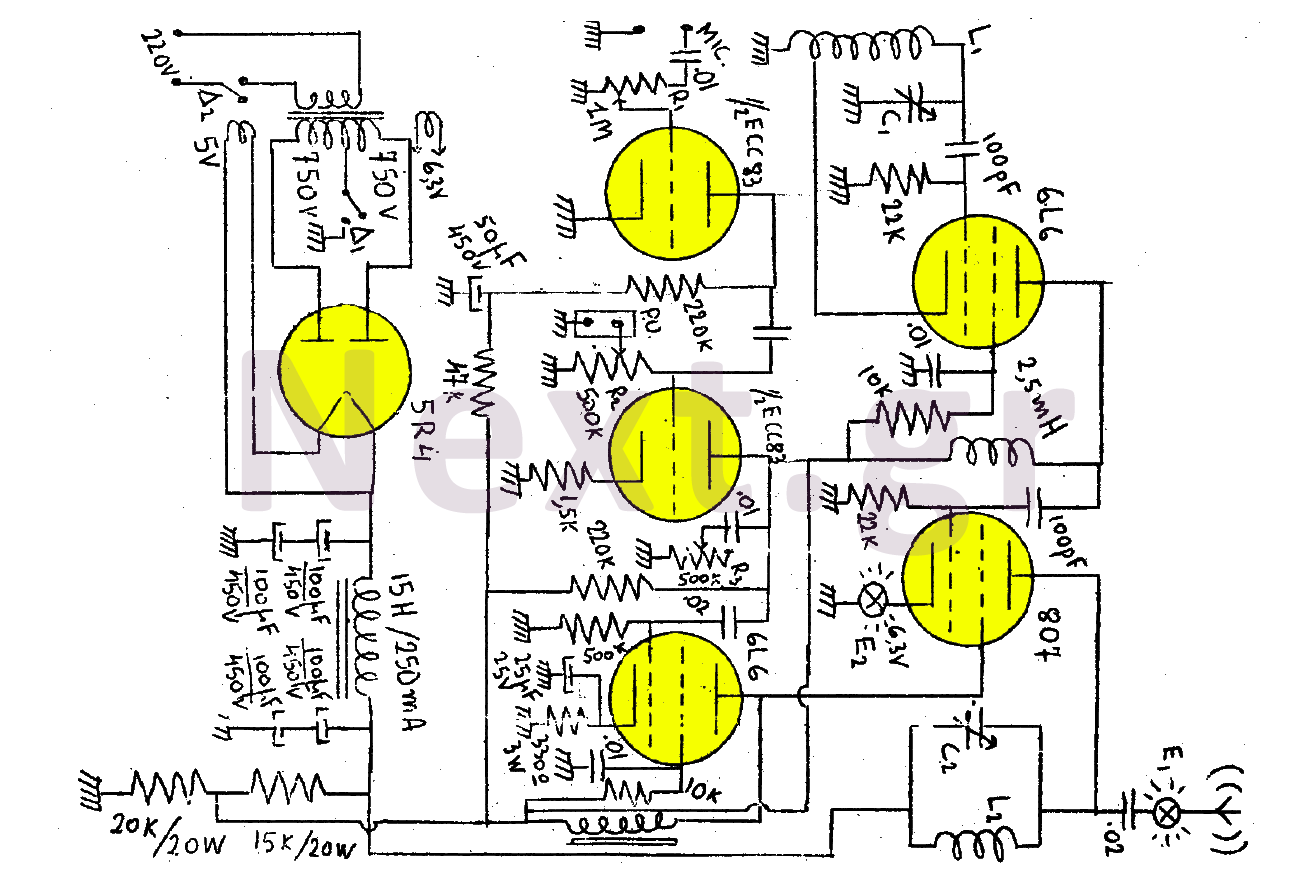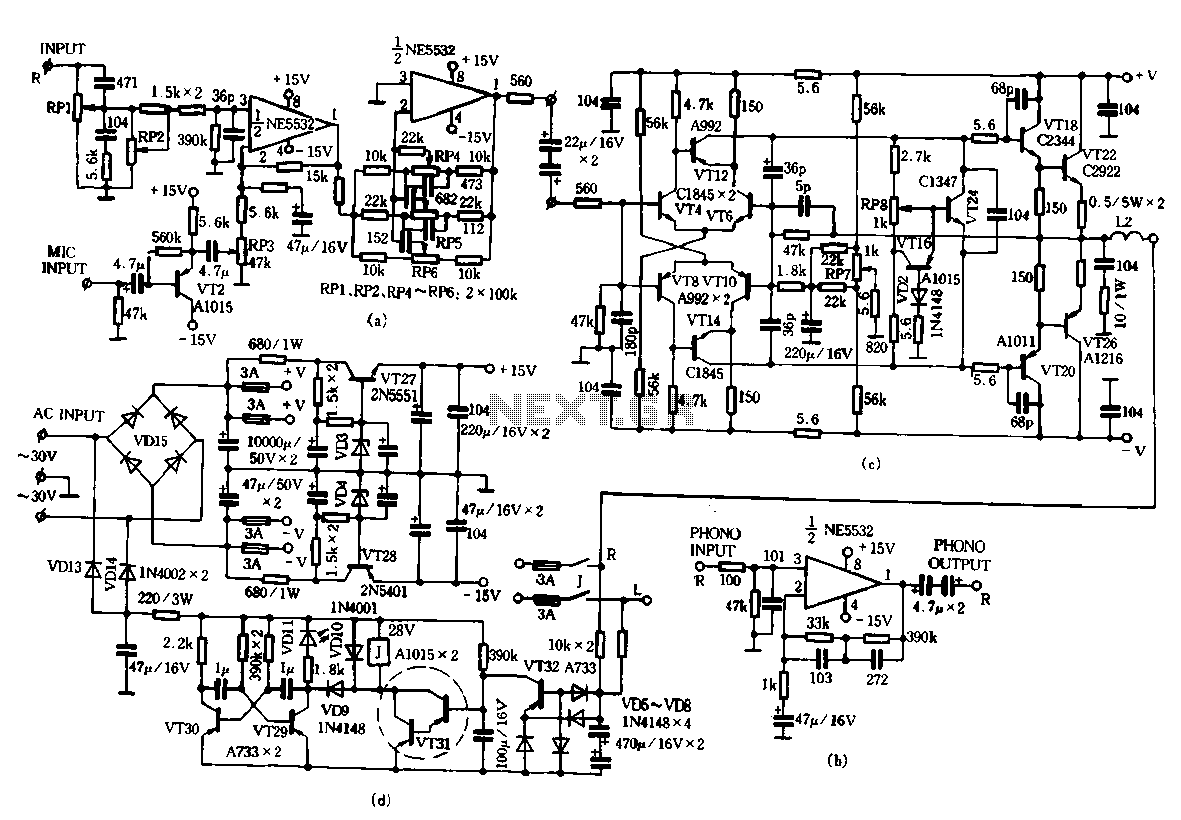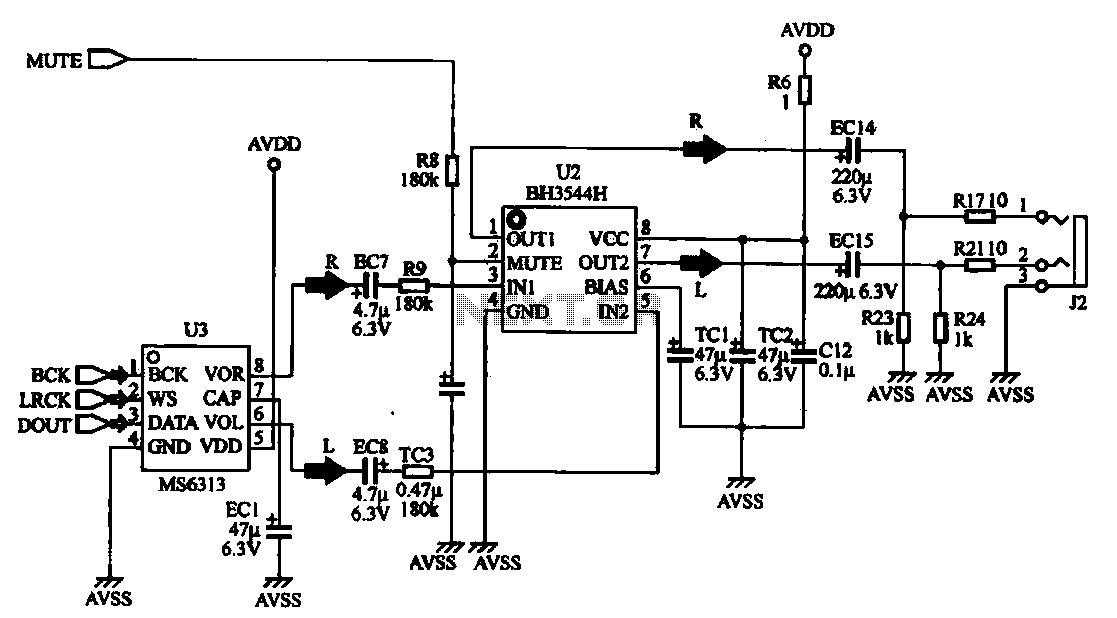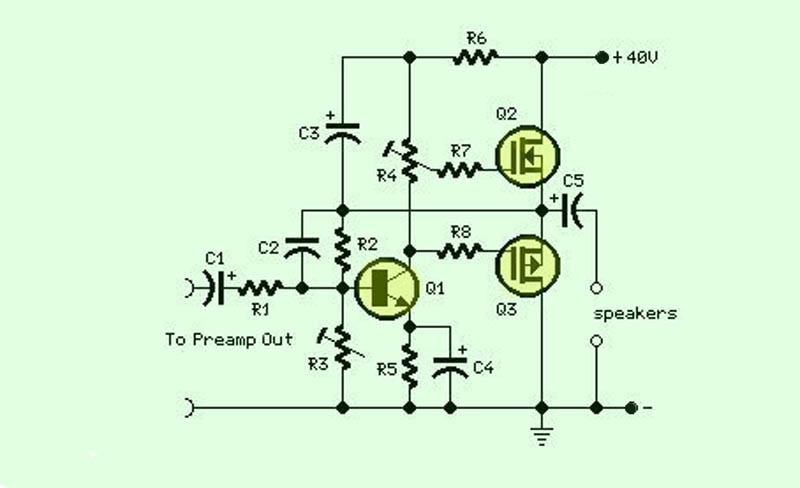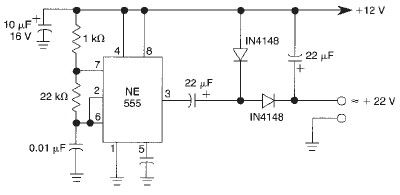
Loudspeaker Protector Monitors Current Circuit
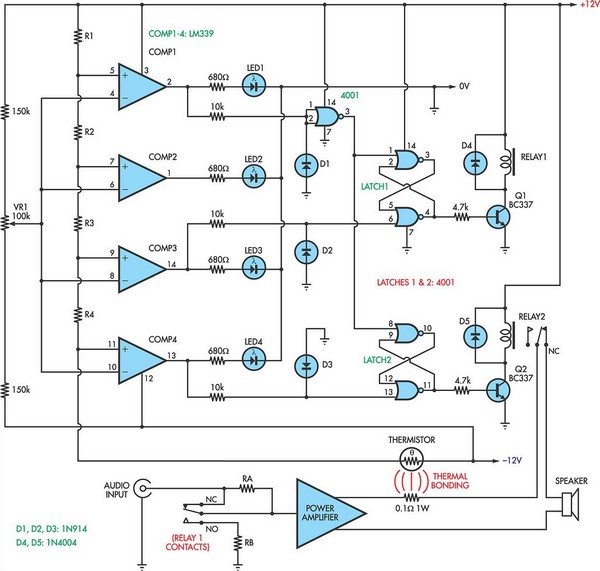
When the voltage on the non-inverting input of each comparator exceeds the voltage at its inverting input, the output transitions to a high state, activating the corresponding LED. NOR gate latches are connected to the outputs of the third and fourth comparators. When the third comparator transitions to a high state, it sets the first latch, activating Q1 and relay 1. This action switches in an attenuation network (resistors RA and RB) to lower the power level. If the power level remains excessive, comparator 4 will activate, setting its latch and turning on Q2 and relay 2, which disconnects the loudspeaker load. The thermistor must cool down before normal operation can resume. The values of resistors R1 to R4 are determined by the thermistor specifications. For instance, if a thermistor with a resistance of 1.5 kΩ at 25 °C is utilized, R1 could be approximately 1.5 kΩ, while R2, R3, and R4 would each be around 100 Ω, depending on the thermistor's temperature coefficient. The setup procedure entails connecting a sine wave oscillator to the input of the power amplifier and using a dummy load for the output. The desired power level is set, and trimpot VR1 is adjusted until LED1 illuminates. Subsequently, increasing the power checks that the other LEDs light up at appropriate levels.
The described circuit employs a set of comparators to monitor voltage levels and activate corresponding indicators and control mechanisms based on the power output of a system, such as an audio amplifier. Each comparator's non-inverting input is connected to a reference voltage, while the inverting input receives the signal from the system. When the monitored voltage surpasses the reference, the comparator output switches high, illuminating an LED as a visual indication of the condition.
The incorporation of NOR gate latches allows for a memory effect in the circuit, enabling the system to maintain the state of the outputs even after the triggering condition has ceased. This is particularly useful in power management applications, where maintaining a specific state (such as disconnecting a loudspeaker) is crucial for preventing damage from excessive power levels.
The attenuation network, consisting of resistors RA and RB, is critical for reducing the power output to acceptable levels. The choice of resistor values is influenced by the characteristics of the thermistor used in the circuit. The thermistor acts as a temperature-sensitive resistor, changing its resistance with temperature fluctuations, which in turn affects the comparator's reference voltage.
The circuit's operation is further enhanced by a setup procedure involving a sine wave oscillator, which serves as a test signal to evaluate the power amplifier's performance. By adjusting trimpot VR1, the user can calibrate the circuit to ensure that the LED indicators function correctly across the expected range of power levels. This design is particularly applicable in audio systems where monitoring and managing output levels are essential for both performance and safety.
Overall, this circuit exemplifies effective voltage monitoring and control, integrating various components to provide a robust solution for managing power levels in electronic systems.When the voltage on the non-inverting input of each comparator exceeds the voltage at its inverting input, the output switches high and illuminates the relevant LED. NOR gate latches are connected to the outputs of the third and fourth comparators. When the third comparator switches high, the first latch is set, turning on Q1 and relay 1. This swi tches in an attenuation network (resistors RA & RB) to reduce the power level. However, if the power level is still excessive, comparator 4 will switch, setting its latch and turning on Q2 and relay 2. This disconnects the loudspeaker load. The thermistor then needs to cool down before normal operation will be restored. The values of R1-R4 depend on the thermistor used. For example, if a thermistor with a resistance of 1. 5kO at 25 °C is used, then R1 could be around 1. 5kO and R2, R3 and R4 would each be 100O (depending the temperature coefficient of the thermistor). The setup procedure involves connecting a sinewave oscillator to the input of the power amplifier and using a dummy load for the output.
Set the power level desired and adjust trimpot VR1 to light LED1. Then increase the power to check that the other LEDs light at satisfactory levels. 🔗 External reference
The described circuit employs a set of comparators to monitor voltage levels and activate corresponding indicators and control mechanisms based on the power output of a system, such as an audio amplifier. Each comparator's non-inverting input is connected to a reference voltage, while the inverting input receives the signal from the system. When the monitored voltage surpasses the reference, the comparator output switches high, illuminating an LED as a visual indication of the condition.
The incorporation of NOR gate latches allows for a memory effect in the circuit, enabling the system to maintain the state of the outputs even after the triggering condition has ceased. This is particularly useful in power management applications, where maintaining a specific state (such as disconnecting a loudspeaker) is crucial for preventing damage from excessive power levels.
The attenuation network, consisting of resistors RA and RB, is critical for reducing the power output to acceptable levels. The choice of resistor values is influenced by the characteristics of the thermistor used in the circuit. The thermistor acts as a temperature-sensitive resistor, changing its resistance with temperature fluctuations, which in turn affects the comparator's reference voltage.
The circuit's operation is further enhanced by a setup procedure involving a sine wave oscillator, which serves as a test signal to evaluate the power amplifier's performance. By adjusting trimpot VR1, the user can calibrate the circuit to ensure that the LED indicators function correctly across the expected range of power levels. This design is particularly applicable in audio systems where monitoring and managing output levels are essential for both performance and safety.
Overall, this circuit exemplifies effective voltage monitoring and control, integrating various components to provide a robust solution for managing power levels in electronic systems.When the voltage on the non-inverting input of each comparator exceeds the voltage at its inverting input, the output switches high and illuminates the relevant LED. NOR gate latches are connected to the outputs of the third and fourth comparators. When the third comparator switches high, the first latch is set, turning on Q1 and relay 1. This swi tches in an attenuation network (resistors RA & RB) to reduce the power level. However, if the power level is still excessive, comparator 4 will switch, setting its latch and turning on Q2 and relay 2. This disconnects the loudspeaker load. The thermistor then needs to cool down before normal operation will be restored. The values of R1-R4 depend on the thermistor used. For example, if a thermistor with a resistance of 1. 5kO at 25 °C is used, then R1 could be around 1. 5kO and R2, R3 and R4 would each be 100O (depending the temperature coefficient of the thermistor). The setup procedure involves connecting a sinewave oscillator to the input of the power amplifier and using a dummy load for the output.
Set the power level desired and adjust trimpot VR1 to light LED1. Then increase the power to check that the other LEDs light at satisfactory levels. 🔗 External reference
